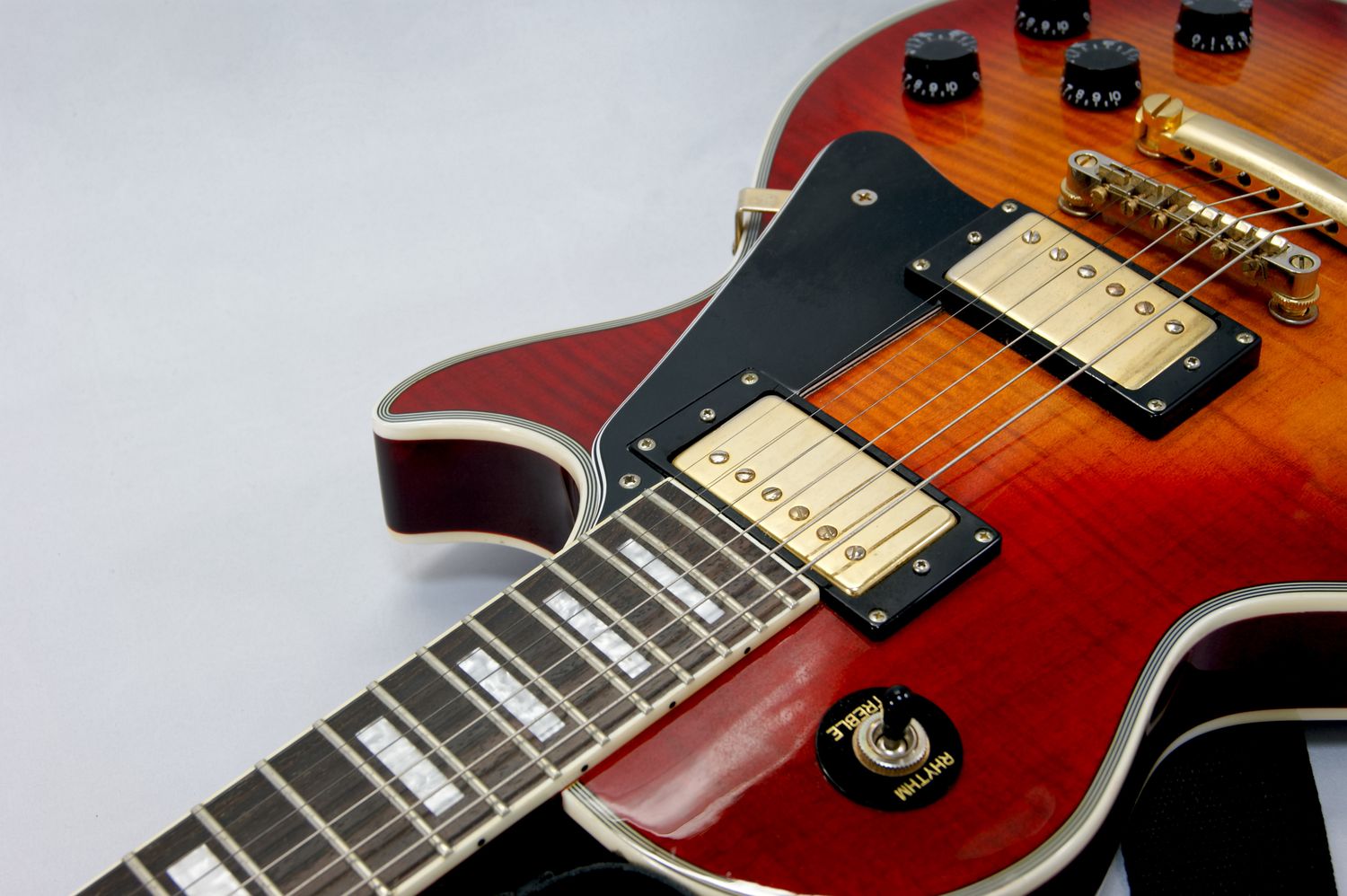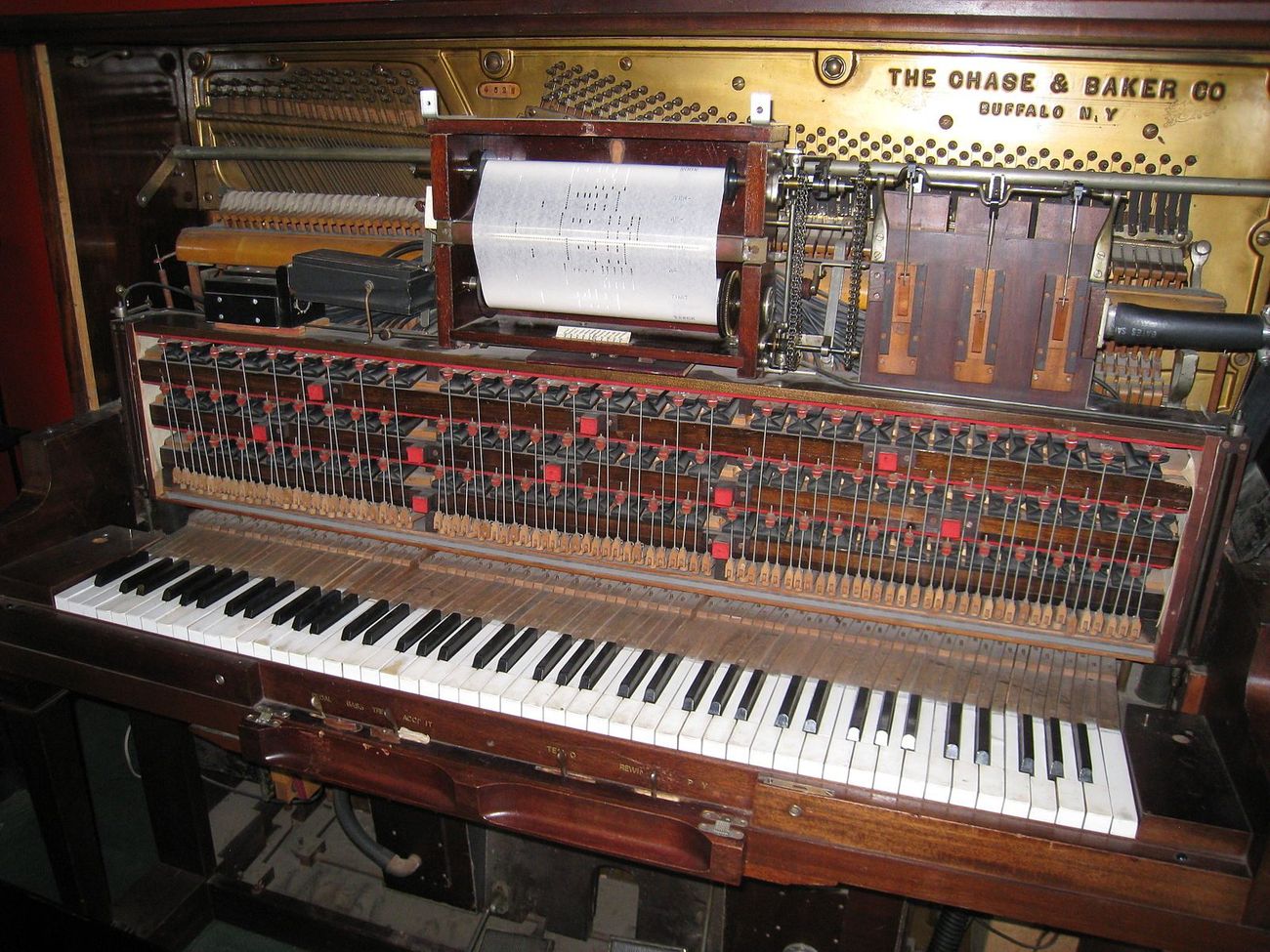Home>Devices & Equipment>Radio>How Does A Radio Transmitter Work


Radio
How Does A Radio Transmitter Work
Modified: January 22, 2024
Discover how radio transmitters work and the technology behind them. Explore the fascinating world of radio communication and gain a deeper understanding of its components and functions.
(Many of the links in this article redirect to a specific reviewed product. Your purchase of these products through affiliate links helps to generate commission for AudioLover.com, at no extra cost. Learn more)
Table of Contents
Introduction
Radio has been a vital part of our lives for decades, keeping us entertained, informed, and connected. Whether we’re listening to music, catching up on the latest news, or tuning in to our favorite talk shows, the radio brings the world to our ears. But have you ever wondered how it all works? How does a radio transmitter enable us to receive these signals?
In this article, we’ll dive into the fascinating world of radio transmitters and explore the technology that brings sound to our speakers. We’ll uncover the basic components of a radio transmitter, discuss the concept of electromagnetic waves, explore different modulation techniques, and learn how amplification and transmission make it all possible. Finally, we’ll touch on the role of antennas and broadcasting in delivering radio signals to the masses.
So, whether you’re an electronics enthusiast or simply curious about the inner workings of your favorite radio station, let’s embark on a journey to unravel the secrets of how a radio transmitter works.
Overview of Radio Transmitter
A radio transmitter is a device that converts sound or information into electromagnetic waves, which are then transmitted through space to be received by a radio receiver. It forms the core of any radio communication system and is responsible for broadcasting audio signals over a specific frequency range.
The main purpose of a radio transmitter is to encode the audio signals, amplify them, and modulate them onto a carrier wave that can be transmitted wirelessly. The carrier wave serves as a carrier for the audio signals, allowing them to be transmitted efficiently through the airwaves.
A radio transmitter typically consists of several key components, including a source of audio signals, an oscillator, a modulator, an amplifier, and an antenna. The audio signals can originate from various sources such as microphones, musical instruments, or audio recording devices.
The oscillator generates a high-frequency carrier wave, which determines the frequency at which the audio signals will be transmitted. The modulator combines the audio signals with the carrier wave using various modulation techniques, such as amplitude modulation (AM) or frequency modulation (FM).
After modulation, the amplified signals are passed to the antenna, which radiates the electromagnetic waves into space. The antenna acts as a transducer, converting electrical signals into electromagnetic radiation that can travel through the air without the need for any physical medium.
It’s important to note that radio transmitters operate within specific frequency bands allocated by regulatory bodies to avoid interference with other devices and communication systems. Different frequency bands are used for different applications, such as AM radio, FM radio, television broadcasting, or mobile communication.
Overall, the radio transmitter plays a pivotal role in the broadcasting industry, enabling the transmission of audio signals across vast distances and allowing us to receive and enjoy radio broadcasts wherever we may be.
Basic Components of a Radio Transmitter
A radio transmitter consists of several essential components that work together to generate and broadcast electromagnetic waves carrying audio signals. Understanding these components is key to understanding how a radio transmitter functions. Let’s explore the basic components:
- Audio Source: The audio source provides the input signals to the transmitter. It can be a microphone, a CD player, a computer, or any device that produces audio. The audio signals are electrical representations of sound waves.
- Oscillator: The oscillator generates a high-frequency signal known as the carrier wave. This wave serves as a carrier for the audio signals, allowing them to be transmitted wirelessly. The frequency of the oscillator determines the frequency at which the audio signals will be transmitted.
- Modulator: The modulator combines the audio signals from the audio source with the carrier wave. Different modulation techniques, such as amplitude modulation (AM) or frequency modulation (FM), are used to encode the audio signals onto the carrier wave. Modulation allows for the efficient transmission and retrieval of audio information.
- Amplifier: The amplified signals from the modulator are passed through an amplifier. The amplifier increases the power of the signals, ensuring that they are strong enough to be transmitted over long distances. The amplification process helps overcome signal loss and interference encountered during transmission.
- Antenna: The antenna is a crucial component that converts the amplified electrical signals into electromagnetic waves. It radiates the electromagnetic waves into space, allowing the signals to propagate through the air. The design and configuration of the antenna determine the directionality and range of the transmitted signals.
These basic components work together in a synchronized manner to produce and transmit radio signals. The audio source provides input signals, the oscillator generates the carrier wave, the modulator encodes the audio signals onto the carrier wave, the amplifier boosts the signal power, and the antenna converts electrical signals into electromagnetic waves for transmission.
It is worth noting that advanced radio transmitters may include additional components for signal processing, filtering, and frequency control. These components help optimize the transmitted signals and ensure reliable communication.
Understanding the basic components of a radio transmitter lays the foundation for comprehending the complex technology behind this fascinating device.
Electromagnetic Waves
Electromagnetic waves are at the heart of radio communication. They are a form of energy that radiates in the form of oscillating electric and magnetic fields, propagating through space without the need for a physical medium. These waves are produced by the interaction between electric charges and magnetic fields.
Electromagnetic waves consist of two main components: electric fields and magnetic fields. These fields oscillate perpendicular to each other and to the direction of wave propagation. The strength and orientation of these fields determine the characteristics of the electromagnetic wave.
One key parameter that describes an electromagnetic wave is its frequency. Frequency refers to the number of complete oscillations of the electric and magnetic fields that occur per second, measured in Hertz (Hz). The frequency of an electromagnetic wave determines its energy and the specific range of the electromagnetic spectrum to which it belongs.
The electromagnetic spectrum encompasses a wide range of frequencies, including radio waves, microwaves, infrared radiation, visible light, ultraviolet radiation, X-rays, and gamma rays. Each region of the spectrum has unique properties and applications.
In the context of radio communication, the radio transmitter uses electromagnetic waves in the radio frequency range of the spectrum. Radio waves have relatively low frequencies, ranging from a few kilohertz (kHz) to several gigahertz (GHz). Different frequency bands are allocated for various communication purposes, such as AM radio, FM radio, television, and mobile communication.
One of the defining features of electromagnetic waves is their ability to travel long distances without significant loss of energy. This allows radio signals to be transmitted over vast areas, making radio communication a widespread and accessible means of information dissemination.
When electromagnetic waves are transmitted by a radio transmitter, they propagate through space until they are received by a radio receiver. The receiver then decodes the received waves and transforms them back into corresponding audio signals, allowing us to hear the transmitted information.
In summary, electromagnetic waves play a crucial role in radio communication, enabling the wireless transmission of audio signals. Understanding the properties and characteristics of these waves is essential in comprehending how a radio transmitter operates.
Modulation Techniques
Modulation is a key process in radio communication that allows audio signals to be encoded onto a carrier wave for transmission. Different modulation techniques are employed to achieve this encoding, each with its own advantages and applications. Let’s explore two common modulation techniques used in radio transmitters:
- Amplitude Modulation (AM): In amplitude modulation, the strength or amplitude of the carrier wave is varied in proportion to the amplitude of the audio signal. The audio signal is superimposed onto the carrier wave by varying its amplitude, resulting in variations in the intensity of the transmitted signal. AM modulation is widely used in AM radio broadcasting, where the audio signal bandwidth is relatively narrow.
- Frequency Modulation (FM): Frequency modulation involves varying the frequency of the carrier wave in accordance with the amplitude of the audio signal. The audio signal controls the instantaneous frequency deviation of the carrier wave, which creates frequency variations in the transmitted signal. FM modulation is commonly used in FM radio broadcasting, where the audio signal bandwidth is wider compared to AM. FM transmission provides better noise immunity and higher fidelity audio reproduction compared to AM.
Both AM and FM modulation techniques have their unique strengths and characteristics. AM modulation is relatively simpler to implement and offers a longer signal range. However, it is more susceptible to noise and interference. FM modulation provides improved audio quality and higher resistance to interference, making it suitable for applications where high-fidelity sound reproduction is desired.
Other modulation techniques, such as phase modulation (PM) and digital modulation schemes like phase shift keying (PSK) and quadrature amplitude modulation (QAM), are utilized in modern radio communication systems. These techniques offer advantages in terms of efficient use of bandwidth and robustness in transmitting digital data.
The choice of modulation technique depends on several factors, including the desired signal quality, available bandwidth, transmission range, and specific application requirements. Radio transmitters are designed to support specific modulation schemes based on these considerations.
By employing suitable modulation techniques, radio transmitters are able to encode audio signals onto carrier waves, enabling the wireless transmission of information. Modulation techniques play a crucial role in delivering clear and reliable radio broadcasts to listeners around the globe.
Amplification and Transmission
Amplification and transmission are crucial stages in the process of radio communication. After the audio signals have been modulated onto the carrier wave, they need to be amplified to ensure their strength and quality before being transmitted through space. Let’s explore these stages in more detail:
Amplification: The modulated signals from the modulation stage are typically weak and need to be amplified before transmission. The amplified signals are stronger and can overcome the resistance and losses encountered during transmission. Amplification is achieved using dedicated electronic devices called amplifiers. These devices take the relatively low-power signals and increase their power level, ensuring that they are robust enough to travel long distances without significant degradation.
There are various types of amplifiers used in radio transmitters, including valve amplifiers, transistor amplifiers, and solid-state amplifiers. Modern radio transmitters often employ solid-state amplifiers, which provide high efficiency, reliability, and compact size.
Transmission: Once the signals have been amplified, they are ready for transmission. The amplified signals are sent to the antenna, a vital component in the radio transmitter that radiates the electromagnetic waves into space. The antenna acts as an interface between the electrical signals and the surrounding atmosphere, converting the amplified electrical signals into electromagnetic waves that can travel without the need for a physical medium.
During transmission, the electromagnetic waves propagate through space in all directions. However, the transmission range and coverage area depend on various factors, including the power of the transmitted signals, the design and height of the antenna, and the frequency of the waves. Higher frequencies generally offer shorter transmission ranges but provide greater bandwidth for signal transmission.
Radio transmission can be affected by various factors, including atmospheric conditions, terrain, and interference from other signals. To ensure reliable transmission, regulatory bodies allocate specific frequency bands to different radio services and enforce strict regulations to minimize interference.
The transmission stage is critical in ensuring the successful delivery of radio signals to receivers. A well-designed and properly operated transmission system ensures that the signals can reach a wide audience, allowing people to enjoy radio broadcasts effortlessly.
It’s worth noting that advancements in technology have led to the development of digital radio transmission systems, such as Digital Audio Broadcasting (DAB) and HD Radio. These systems provide improved audio quality and greater signal robustness compared to traditional analog transmissions.
In summary, amplification boosts the strength of modulated signals, making them suitable for transmission. Through the antenna, the transmitter converts the amplified electrical signals into electromagnetic waves, allowing them to travel through space and reach receivers.
Antenna and Broadcasting
The antenna is a critical component in the radio transmitter that plays a vital role in converting amplified electrical signals into electromagnetic waves for transmitting audio signals. It is responsible for projecting the electromagnetic waves into the surrounding space, enabling the broadcast of radio signals. Let’s delve into the antenna and its role in broadcasting:
Antenna Functionality: The primary function of an antenna is to efficiently radiate electromagnetic waves into space or to receive incoming waves. It acts as a transducer, converting electrical signals into electromagnetic radiation and vice versa. In the context of a radio transmitter, the antenna radiates the amplified electrical signals as radio waves, propagating them through the air without the need for any physical medium.
Antenna Design and Characteristics: Antennas come in various shapes and sizes, each designed for specific applications and frequencies. Their design aims to optimize radiation patterns, efficiency, and gain. Radiation patterns determine the directionality of the emitted waves, ensuring that the radio signals are focused in the desired direction, covering the intended broadcasting area.
Antenna gain refers to the ability of an antenna to concentrate radiated energy in a specific direction. Higher gain antennas can project signals over a longer distance, allowing for greater signal coverage. Antennas can be either omnidirectional, radiating waves equally in all directions, or directional, focusing the energy in a particular direction.
Broadcasting: Broadcasting refers to the transmission of audio signals over a wide area, allowing them to be received and enjoyed by a large audience. Radio broadcasting involves the use of powerful transmitters, carefully designed antennas, and specific frequency allocations.
Radio stations are allocated specific frequency bands by regulatory bodies to avoid interference with other services. These frequency bands correspond to different broadcasting services, such as AM radio, FM radio, or digital audio broadcasting. By utilizing unique frequencies, radio stations can operate simultaneously without interfering with each other.
Broadcasting stations strategically position their antennas at elevated locations, such as towers or masts, to maximize signal coverage and reach a target audience. The height and location of the antenna significantly impact the transmission range and signal strength.
It’s important to note that antennas are not only used in transmitters but also in radio receivers. The antenna in a receiver picks up the electromagnetic waves and converts them back into electrical signals, which are then processed and amplified to produce sound.
In summary, the antenna is a crucial component in radio transmitters and broadcasting systems. It converts amplified electrical signals into electromagnetic waves, enabling the transmission of audio signals over long distances. With carefully designed antennas and proper frequency allocations, broadcasting stations can reach a wide audience, enriching their lives with music, news, and entertainment.
Conclusion
Radio transmitters are marvelous devices that bring sound to our speakers and connect us to the world around us. From the basic components of a transmitter to the concept of electromagnetic waves, the process of modulation, amplification, and transmission, and the crucial role of antennas and broadcasting, we have explored the fascinating workings of radio transmitters.
These transmitters convert audio signals into electromagnetic waves, allowing us to enjoy music, news, and entertainment through radio broadcasts. The audio signals are modulated, encoded onto carrier waves, amplified, and then transmitted through space by antennas. The electromagnetic waves travel without the need for a physical medium, bringing the information to receivers, where it is decoded and transformed back into sound.
Understanding the principles behind radio transmitters helps us appreciate the remarkable technology employed in radio communication. We have explored modulation techniques such as amplitude modulation (AM) and frequency modulation (FM), each with its own advantages and applications. We have also learned about the important role of amplification in boosting signal strength and the transmission stage, where electromagnetic waves are projected into space for wide coverage.
Antennas, with their unique designs and characteristics, are vital in converting electrical signals into electromagnetic radiation and vice versa. Their efficient operation ensures the successful broadcast of radio signals, reaching listeners far and wide.
As radio technology continues to evolve, digital transmission systems are becoming more prevalent, offering improved audio quality and signal robustness. This enables us to enjoy an even better radio experience, whether through analog or digital broadcasts.
In conclusion, radio transmitters are intricate devices that bring the magic of radio into our lives. They enable the transmission of audio signals by utilizing modulation techniques, amplification, and radiating them through antennas. The result is a seamless connection, allowing us to stay entertained, informed, and connected to the world through the power of radio.











